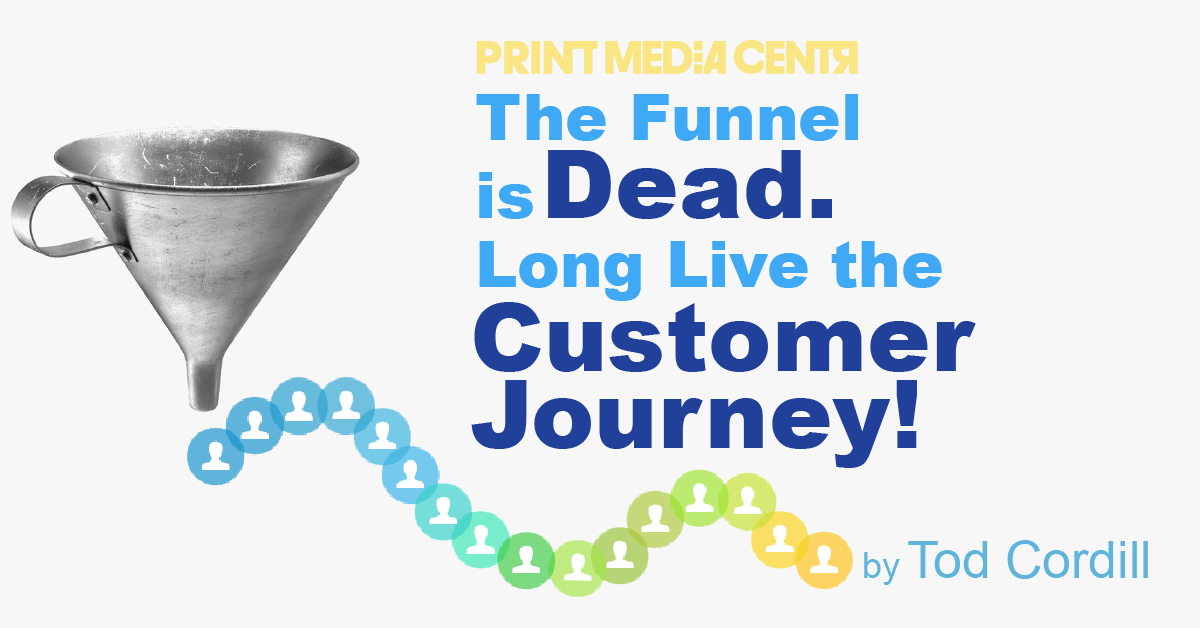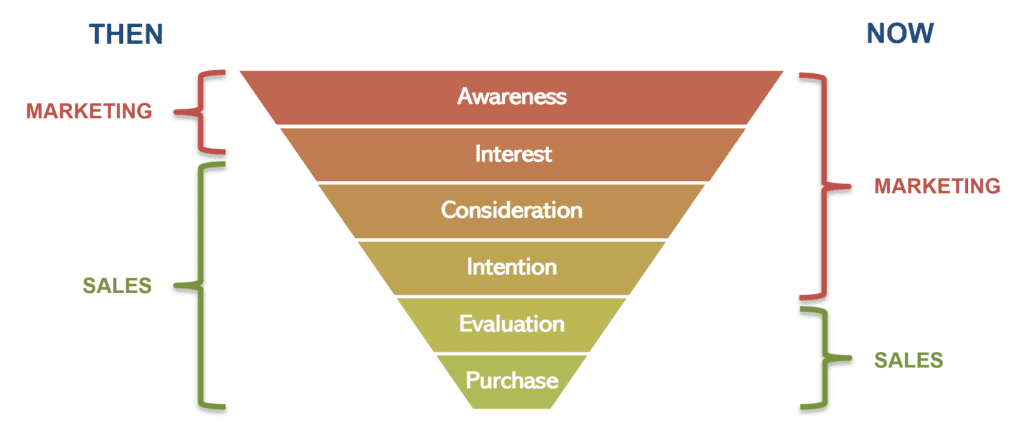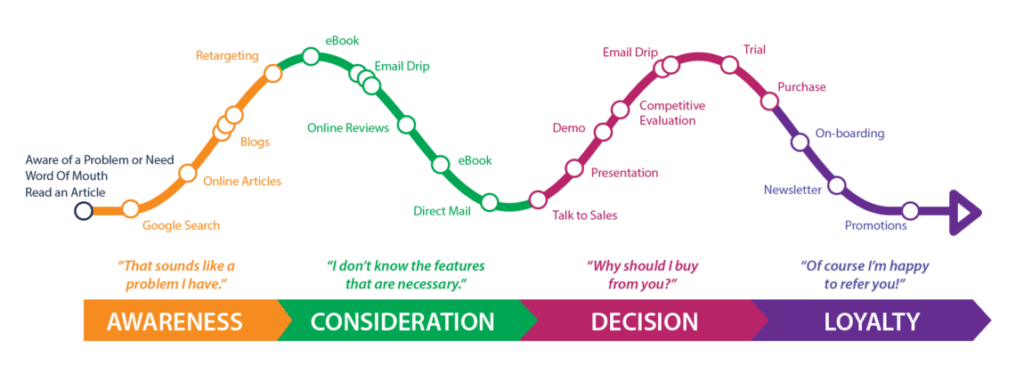
I remember the first time I read about the marketing funnel and how prospects go through an awareness, consideration, and decision process on their way to becoming a customer. It made so much sense.
The other elegant thing about the funnel is it is large on top and small at the bottom. For every 100 people that might be aware of your company, only 20 might consider you as a supplier, and 5 might become a customer. Large at the top, small at the bottom. Like a funnel.
But for every drop of water that enters a funnel, a drop comes out at the bottom. The funnel is more of a large net you cast that gathers things up. Unlike a liquid funnel, all contacts that enter the marketing funnel do not become customers. The funnel does not describe the process a customer goes through.
The Marketing Funnel

The marketing, or sales, funnel, does illustrate the mental states a person goes through during their journey to become a customer, but it does not describe what they do. The funnel is a conceptual model that is a representation of a system, made of the composition of concepts that are used to help people know, understand, or simulate a subject the model represents. (source: Wikipedia)
A model helps you understand cause and effect and predict outcomes. Thinking of the funnel as a model can be very helpful as it can help guide the activities that you, as a marketer, do.
The Sales Pipeline Model
The sales pipeline is another model that allows you to define your sales activities and predict outcomes. The sales pipeline describes your processes and the activities your sales team does, not your customer’s mental state and activities.

The Customer Journey
The customer journey describes the customers’ experience from the time they first learn of your company, products, or services until the time they become a customer and beyond. The customer journey can sometimes be very quick, measured in days or even hours for low-risk and low-cost products or services, or it can take months or even years. The more expensive, risky, and complex the product or service, the longer the journey.
In my blog post titled How To Remain Relevant By Embracing Change, I discussed how the internet changed the customer journey, requiring sales and marketing processes to adopt new strategies.
Here’s a simplistic map of a customer journey. It shows the types of content customers consume and the ways they engage with your company online and how they interact with your sales team. The reality is it often looks more like a random walk, with one step forward and two steps back.

You can’t accurately define or model the customer journey. Every customer has their own needs and unique decision processes. You can model the sales and marketing processes that you use. Map the activities in your models as close to the mental states and decision processes a customer goes through.
Your sales and marketing strategies should define, and be based on, the customer journey that you expect and hope your customers will take. Your strategy should be based on the experiences you want your customers to have when engaging with your company, not on the things that you do. First, define your customer’s journey. Then define your models, your content, and the activities your sales team will take.
Guide your customers along their personal journey.












